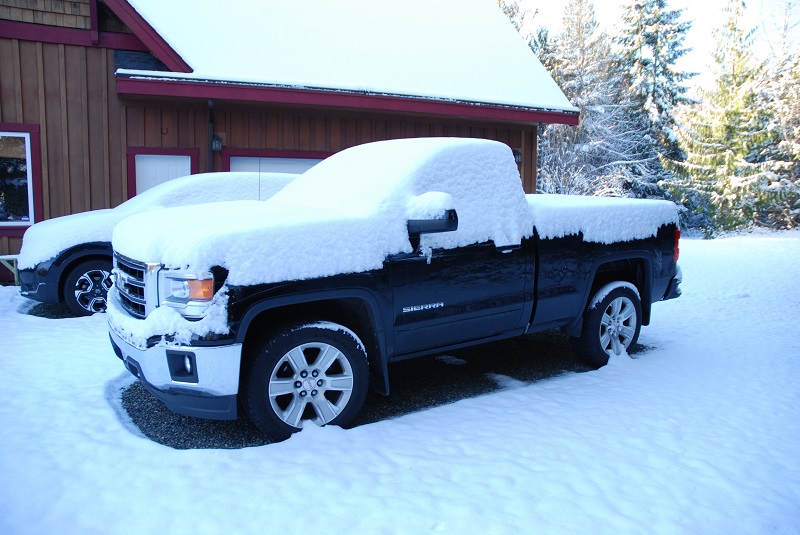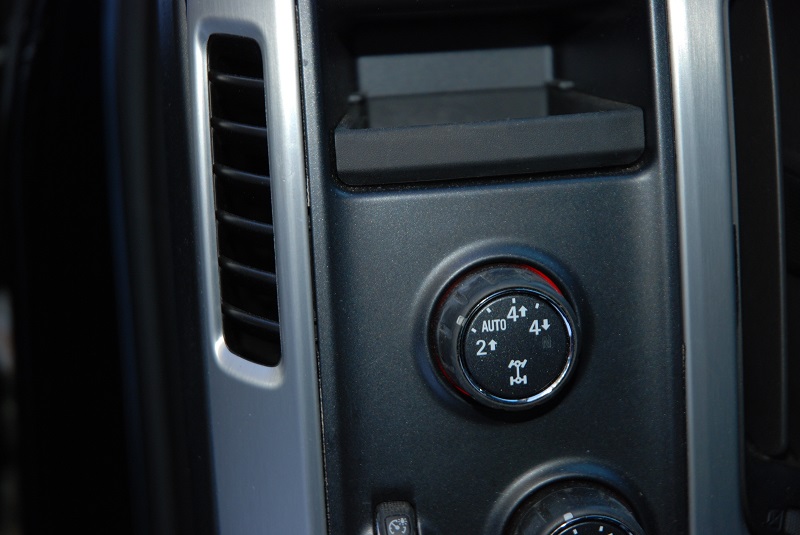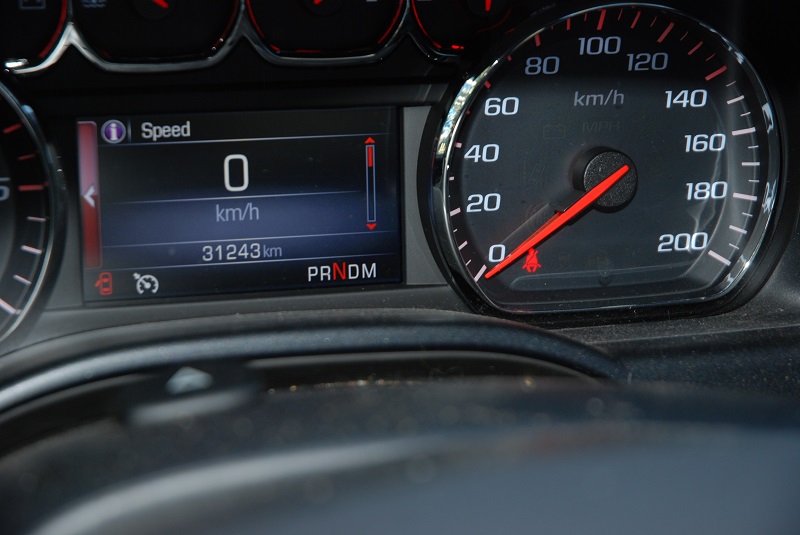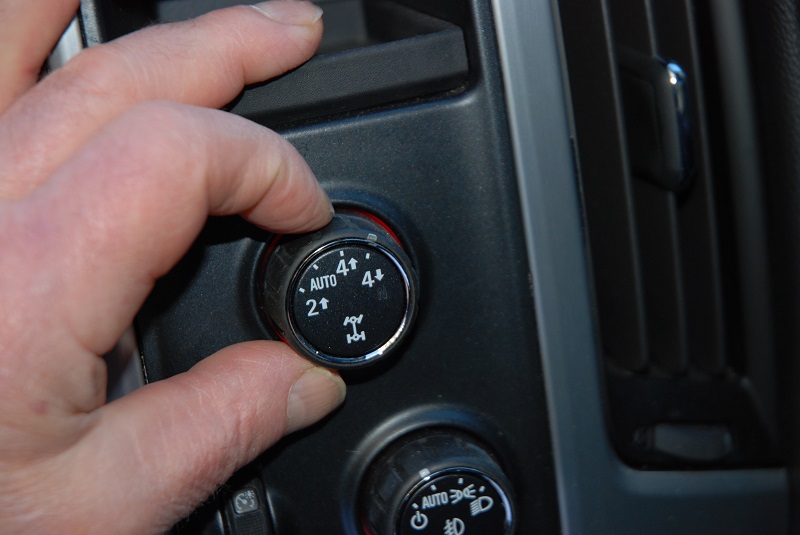
When you wake up to this and its wet and heavy, you’ll really appreciate the fact you have 4×4 capability. (Image/Wayne Scraba)
New 4X4 pickup trucks and SUVs are everywhere today.
And many of those 4X4 buyers have zero intention of ever taking their truck off road.
We suspect a lot of those owners never even think about actually using the vehicle’s capabilities to the fullest. They simply want the peace of mind of being able to switch from 2WD to 4WD with either the twist of a knob or the tug of a lever. When a polar vortex strikes and you’re up to your you-know-what in the white stuff, using 4WD makes sense.
If you’re new to four wheeling though, have you wondered what the controls for the 4WD system actually do? And equally important, when and where should you use them? If so, you’re not alone. Here’s a look at the very basics of operating your 4WD system (seasoned old timers can skip it):
Before going any further, something we should point out is that there are different types of 4WD systems out there. The two most common include full-time and part-time 4WD:
Full-Time 4WD
Essentially, full-time 4WD means the vehicle is always making power available to all four wheels (at least technically speaking). Full-time 4WD offers maximum traction under all conditions, and doesn’t require additional input from the driver (to turn on or off). Due to the nature of a full-time system, you’ll find the vehicle isn’t quite as maneuverable on-road when compared to a part-time 4X4 package.
Today, full-time 4WD is actually uncommon in modern trucks and SUVs. It’s also hard on the wallet due to increased fuel consumption.
The difference between all-wheel drive (AWD) and full-time 4WD is that full-time 4WD has a low range. AWD does not.
Part-Time 4WD
Part-time 4WD means the vehicle has a means to select between 4WD and 2WD.
On a newer 4X4, it can be a lever or a switch. On older 4WD trucks and SUVs, the front hubs were manually locked and unlocked. You’d get out of the truck and turn a knob on the hubs to lock/unlock them. On modern 4WD vehicles, locking hubs engage automatically when you engage 4WD.
With contemporary setups, you can also shift between 4WD and 2WD on the go. A vehicle with 4WD provides superior traction on slippery surfaces because the front and rear sets of wheels are (obviously) locked together.
It is important to note that vehicles with part-time 4WD systems should not be driven on dry, smooth road surfaces when in 4WD mode. The constant use of 4WD under these conditions can damage drivetrain components.
…
Another consideration is the differential system.
Case-in-point is a 2WD pickup truck without limited slip. In a vehicle with an open differential, power is distributed to the axle by way of the path of least resistance. The other axle is along for the ride. If one of the wheels spins easily (in the snow), that’s the point of least resistance. Basically, you just got stuck.
This same thing applies to 4WD vehicles with open differentials on the front and rear axles. Both axles on the truck might see a loss of traction on the same side and like a 2WD scenario, you can get stuck. That’s why a limited-slip rear axle is a great feature in a 4WD truck or SUV. At the worst, you’ll still have three wheels marching forward (two rear, and one front wheel).
There are locking front differentials available. With these setups, you can turn the differential locker on or off at the flick of a switch. What this means is the 4X4 always has true four-wheel traction available.
There are also certain automatic 4WD systems that allow the vehicle to operate in 2WD until the system senses a need for 4WD (or AWD). The system automatically routes the power delivery to all four wheels, varying the amount of power provided to the respective axles as necessary. Most often, a sensor is triggered by a slipping wheel, which in turn, engages the AWD.
Keep in mind some of these systems are not designed for serious off roading (usually in vehicles where the front axle does the principle amount of work). On the other hand, applications, such as those found under some pickup trucks where the rear axle does the principle amount of work in 2WD are more than off-road capable.
The owner’s manual for your truck or SUV details which type of 4WD system is equipped to your vehicle. Most manufacturers offer detailed information on where and when to use 4WD. Nonetheless, here’s a summary of where and when to engage the system:
High Range 4WD
4-High allows you to drive at normal speed, if necessary (keeping in mind the caution mentioned earlier regarding driving on dry pavement). The high range ratios in 4WD mode are the same gear ratios as the vehicle has in 2WD mode.
Use 4-High for the following conditions:
- additional traction when the terrain isn’t steep
- snow
- ice
- muddy roads or when operating where there is no road
- rocky, gravel roads
- when stuck in sand or snow
- under extremely slippery conditions
Low Range 4WD
4-Low alters the gearing in your truck. The design allows you the vehicle to creep along at slow speeds (which in turn, reduces the potential for damage). Typically, vehicle manufacturers recommend you do not exceed 45 mph in 4-Low. Keep in mind that 4-Low does not provide more traction. Instead, it provides considerably more torque (often 2-3 times that of 4-High at very low speeds).
Use 4-Low for the following conditions:
- on wet, slippery surfaces
- in heavy, wet snow
- climbing or descending steep hills
- on very rough terrain (trails, off road)
- powering through mud
- climbing rocks
- driving through deep sand
- fording water
…
4WD Tips
- Most systems can be shifted into 4-Low as the vehicle is moving forward very slowly at 1-2 mph with the transmission in neutral. Alternatively, you can stop the vehicle completely and engage 4-Low. Wait for the drive system lamp to stop flashing before shifting the transmission into gear.
- To shift back from 4-Low to 4-High, slow to 1-2 mph with the transmission in neutral. Wait for the drive system lamp to stop flashing before shifting the transmission into gear.
- Always engage 4-Low before you need it, and if you’re in doubt about the conditions, slow down and select 4-Low
- Never operate 4WD on hard dry surfaces
- Even with 4WD, slow and steady is much more important than fast and aggressive.
- If the vehicle has an “Auto” setting, it will prove ideal for use when road surfaces vary (for example, wet or dry, snowy or dry, etc.). Typically, driving in this mode results in slightly lower fuel economy than the 2WD mode.
- When in 4WD, the front wheels will feel as if they are “pushing” or “skidding” in a tight turn. Don’t worry! This is normal.
- Treat loose or wet surfaces as if they’re ice. That means you should do everything (brake, accelerate, turn) slowly and gently. This approach keeps the tires from spinning on acceleration and it also keeps them from locking up on deceleration.
- If you have driven through deep water or mud or deep wet snow, apply your brakes several times at low speed to dry them out. Keep in mind that water, mud and deep snow will affect brake operation.
Once you become accustomed to the capabilities your new 4X4 offers you’ll find the truck or SUV can go through things you never thought possible. The seasoned 4×4 veterans are probably nodding and smiling (“I told you so…”). For more info, check out the accompanying photos:

This 4X4 pickup has an automatic transfer case. What this means is the truck has all the features of a regular electronically controlled part time 4WD as well as an automatic function that senses if and when a wheel slips. In turn, it engages 4WD as necessary. (Image/Wayne Scraba)

When shifting from Automatic or 4-High to 4-Low, the transmission must be in Neutral. Typically, the vehicle can be rolling forward, but at speeds of only 1-2 miles per hour. You can shift from 4-High to 2WD or Auto at any speed. (Image/Wayne Scraba)

In most situations, shifting into 4-Low means the vehicle should be restricted to use below 45 or so miles per hour. If you’re in slippery conditions or if you’re in doubt, it’s a good idea to slow down and use 4-Low. (Image/Wayne Scraba)

Comments